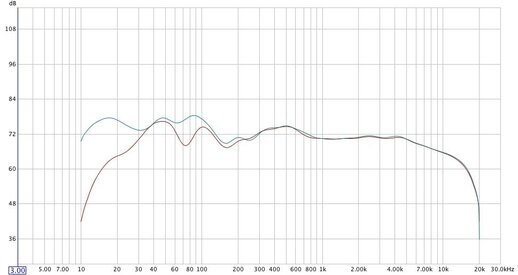Hi Gang,
I'm back to using REW....and new to the newest versions. I haven't used REW since 2011, and I see John has added a lot of great new features since I last used REW back in 2011, which is way cool.
Back in 2011, I used REW to help integrate my REL R-305 sub-bass unit into my 2-channel stereo system which was comprised of Dynaudio Contour S3.4s, a fairly large floorstander loudspeaker.
To do this, I used REW in conjunction a very powerful statistical technique called Design of Experiments, aka DOE (John, you may have heard of DOEs)
Anyhoo, I had three "control factors" that impacted the in-room frequency response: two "continuous" factors from the REL: 1) Sub Gain and 2) Sub Crossover (XO), a third "discrete factor", whether or not the foam bung was in the rear bass port or not (the two levels for this was IN or OUT)
The power of the DOE is that it would allow me to use REW to measure the in-room response at the different factor settings and determine which setting on the sub and speakers would provide the best in-room response. The DOE design was a 3-factor, 2-level full factorial design (we usually we do DOEs at two levels, a Low level and a High level for each factor); each combination of factors is tested at all levels to create what is referred to as a "fully orthogonal" design.
Here are results of the DOE analyzed in JMP11 for just the 20 Hz response. In actuality, I did a more comprehensive DOE at a number of different requencies to correct for room peak and null modes. The DOE is telling me to set the Sub Gain to 12 and the XO point to 0 to optimize the 20Hz response (as shown in the leverage plots).

You can also see from the Interaction Profiles plot there is an interaction between Sub Gain and Sub XO. With a p-value of 0.051, this interaction is just borderline statistically significant (using an alpha of 0.05 for the ANOVA that underpins DOE).
Just as an example, here is a pic using 1/3 smoothing of my right Dynaudio speaker w/o the REL sub and before and after doing the DOE to optimize the sub settings. Blue is the right speaker before optimization of the REL sub settings from the DOE and GREEN is the result after doing my DOE (reference SPL for the REW measurement was 72 dB). You can see I was able to raise both the bass response and correct & smooth out some room modes by using the DOE to tell me where to set the Sub Gain and XO values, etc.

Now, I'm back with a new pair of Harbeth 30.2s and will be doing another DOE to optimize the 30.2s with the REL R-305 using the latest and great version of REW 5.0 Buld 22....so stay tuned!
Cheers, gang.
I'm back to using REW....and new to the newest versions. I haven't used REW since 2011, and I see John has added a lot of great new features since I last used REW back in 2011, which is way cool.
Back in 2011, I used REW to help integrate my REL R-305 sub-bass unit into my 2-channel stereo system which was comprised of Dynaudio Contour S3.4s, a fairly large floorstander loudspeaker.
To do this, I used REW in conjunction a very powerful statistical technique called Design of Experiments, aka DOE (John, you may have heard of DOEs)
Anyhoo, I had three "control factors" that impacted the in-room frequency response: two "continuous" factors from the REL: 1) Sub Gain and 2) Sub Crossover (XO), a third "discrete factor", whether or not the foam bung was in the rear bass port or not (the two levels for this was IN or OUT)
The power of the DOE is that it would allow me to use REW to measure the in-room response at the different factor settings and determine which setting on the sub and speakers would provide the best in-room response. The DOE design was a 3-factor, 2-level full factorial design (we usually we do DOEs at two levels, a Low level and a High level for each factor); each combination of factors is tested at all levels to create what is referred to as a "fully orthogonal" design.
Here are results of the DOE analyzed in JMP11 for just the 20 Hz response. In actuality, I did a more comprehensive DOE at a number of different requencies to correct for room peak and null modes. The DOE is telling me to set the Sub Gain to 12 and the XO point to 0 to optimize the 20Hz response (as shown in the leverage plots).
You can also see from the Interaction Profiles plot there is an interaction between Sub Gain and Sub XO. With a p-value of 0.051, this interaction is just borderline statistically significant (using an alpha of 0.05 for the ANOVA that underpins DOE).
Just as an example, here is a pic using 1/3 smoothing of my right Dynaudio speaker w/o the REL sub and before and after doing the DOE to optimize the sub settings. Blue is the right speaker before optimization of the REL sub settings from the DOE and GREEN is the result after doing my DOE (reference SPL for the REW measurement was 72 dB). You can see I was able to raise both the bass response and correct & smooth out some room modes by using the DOE to tell me where to set the Sub Gain and XO values, etc.
Now, I'm back with a new pair of Harbeth 30.2s and will be doing another DOE to optimize the 30.2s with the REL R-305 using the latest and great version of REW 5.0 Buld 22....so stay tuned!
Cheers, gang.
Attachments
Last edited:















